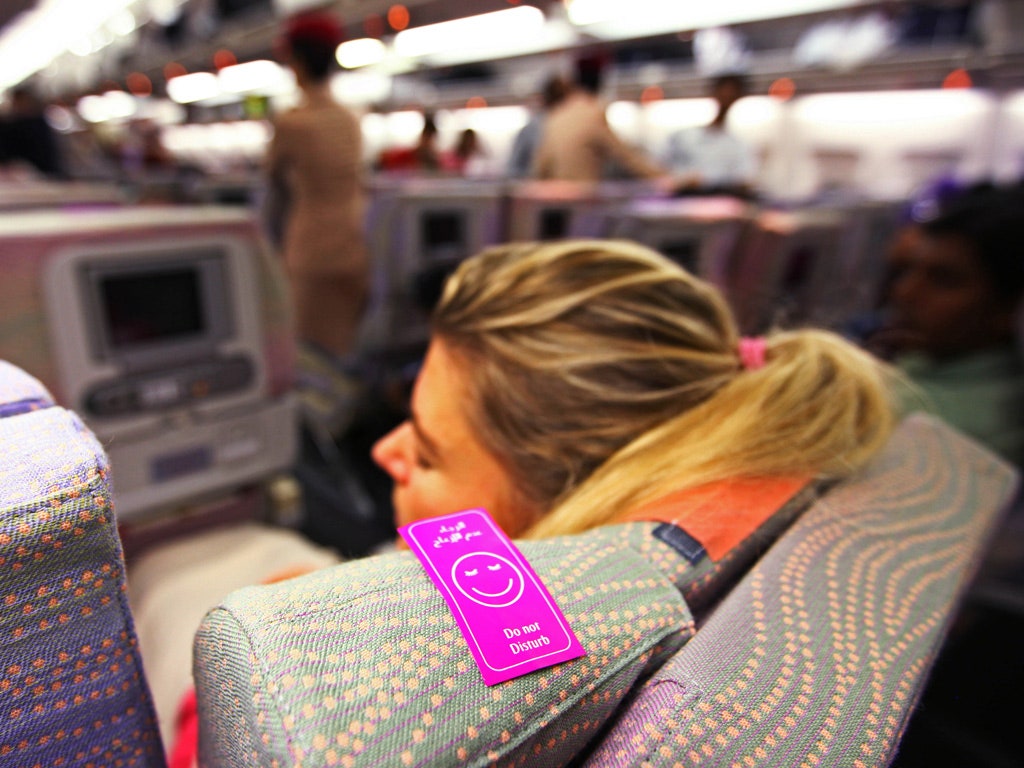Senior Flights offer a unique set of considerations for older travelers. Planning a trip requires attention to detail, ensuring comfort and ease throughout the journey. This guide explores the specific needs of senior citizens, offering advice on choosing flights, navigating the booking process, and maximizing in-flight comfort. We’ll examine various airline services, pricing strategies, and essential tips for a stress-free experience.
From understanding accessibility features and preferred assistance to selecting the most suitable flight class and managing potential health concerns, we aim to provide comprehensive information. We’ll also delve into the importance of travel insurance and emergency preparedness, equipping senior travelers with the knowledge and resources to enjoy their journey with confidence.
Understanding Senior Traveler Needs
Catering to the specific needs of senior travelers is crucial for ensuring a comfortable and safe journey. This section details the unique considerations involved in air travel for this demographic, focusing on health concerns, accessibility, and preferred assistance.
Unique Travel Considerations for Senior Citizens
Senior citizens often have different travel needs compared to younger passengers. Factors such as reduced mobility, potential health issues, and a preference for a less rushed travel experience significantly influence their flight choices. For example, longer layovers might be preferred to avoid rushing between connecting flights, and direct flights are generally favored to minimize potential stress and physical exertion. The overall travel experience should be designed to minimize discomfort and maximize ease of movement.
Common Health Concerns Impacting Flight Choices for Seniors
Several health concerns can influence flight choices for seniors. Pre-existing conditions like heart problems, respiratory issues, and joint pain can be exacerbated by air travel. Changes in cabin pressure and prolonged periods of immobility can be particularly challenging. Therefore, seniors may opt for shorter flights, choose airlines with excellent medical assistance provisions, and carefully consider the duration of their overall journey. For example, a senior with a history of deep vein thrombosis might prefer a shorter flight or request aisle seating for improved circulation.
Accessibility Features in Air Travel for Seniors
Accessibility is paramount for senior travelers. Features such as wheelchair assistance, priority boarding, and accessible restrooms are essential for ensuring a smooth and comfortable journey. Airlines should provide clear and readily available information on these services, and staff should be adequately trained to provide assistance efficiently and respectfully. Easy access to assistance desks and clear signage within airports and aircraft are also vital components of accessible air travel. For instance, the availability of motorized wheelchairs at the gate and assistance with baggage handling can significantly improve the overall travel experience for seniors with mobility limitations.
Preferred Types of Assistance Seniors Might Require During Air Travel
Seniors may require various forms of assistance throughout their journey. This can range from help with baggage handling and navigating airports to in-flight assistance with seating, meals, and medication. Some may require wheelchair assistance at the airport and on the plane, while others may benefit from pre-boarding to secure their seats and settle in comfortably before the general boarding rush. Clear communication channels with airline staff are crucial for ensuring that all assistance needs are met effectively and efficiently. For example, advance notification of special dietary requirements or the need for assistance with medication can prevent potential complications.
Airline Senior-Specific Services Comparison
| Airline Name | Baggage Allowance | In-flight Assistance | Special Meal Options |
|---|---|---|---|
| United Airlines | Varies depending on fare class and frequent flyer status; often includes extra baggage allowance for seniors | Wheelchair assistance, priority boarding, and assistance with mobility are available upon request. | Offers a range of special meal options, including diabetic, low-sodium, and vegetarian meals. Requires pre-ordering. |
| Delta Air Lines | Similar to United, with options for extra baggage allowance for those with mobility issues. | Provides similar assistance to United, with dedicated staff to assist with mobility and other needs. | Offers a similar selection of special meals to United, requiring advance booking. |
| American Airlines | Baggage allowance varies by fare class. Contact customer service for senior-specific allowances. | Provides wheelchair assistance, priority boarding, and in-flight assistance as needed. | Offers various special meal options that need to be pre-ordered. |
| British Airways | Baggage allowance varies by fare class. Contact customer service for senior-specific allowances. | Offers assistance similar to other major airlines, including wheelchair assistance and priority boarding. | Provides a range of special meal options with pre-ordering required. |
Flight Options and Pricing
Choosing the right flight is crucial for a comfortable and enjoyable senior travel experience. This section will explore various flight classes, pricing factors, and airline programs designed to cater to the needs of older travelers, ultimately helping you plan a stress-free journey.
Flight Class Comparison: Comfort and Suitability for Seniors
Different flight classes offer varying levels of comfort and amenities. Economy class, while the most affordable, often involves cramped seating and limited legroom, potentially causing discomfort for seniors with mobility issues. Premium economy provides a step up with more legroom and recline, often including enhanced meal service. Business class offers significantly more space, lie-flat seats, and superior service, making it a more comfortable option for longer flights. First class provides the highest level of luxury and personalized service, but comes at a premium price. The best choice depends on individual needs and budget; prioritizing comfort may justify the higher cost of premium economy or business class for a more relaxing journey.
Factors Influencing Senior Flight Pricing
Several factors influence the cost of airfare for senior travelers. Seasonality plays a significant role, with peak travel periods (holidays, school breaks) generally commanding higher prices. Booking time is another key factor; booking well in advance often yields lower fares, while last-minute bookings are usually more expensive. Specific routes and airline policies also impact pricing; flights to popular destinations or during high-demand times are likely to be more costly. Finally, the chosen flight class significantly impacts the overall cost.
Airlines Offering Senior Discounts or Special Programs
Several airlines offer discounted fares or special programs for senior travelers. While specific programs vary and may change, some airlines may offer age-based discounts or membership programs that provide benefits such as priority boarding or baggage allowances. It is advisable to check directly with airlines or travel agencies for the most up-to-date information on available senior discounts and programs. For example, some airlines may offer reduced fares for travelers aged 65 or older, or they might have partnerships with senior travel organizations offering exclusive deals. Always verify details on the airline’s official website or by contacting customer service.
Hypothetical Domestic Itinerary for a Senior Traveler
Consider a hypothetical domestic trip from New York City to San Francisco for a senior traveler. To minimize stress, a direct flight would be preferable, avoiding layovers and potential delays. Booking a flight with a reputable airline known for good customer service is recommended. Choosing a morning flight can allow for a more relaxed pace, minimizing potential jet lag. Premium economy or business class would be ideal to maximize comfort, offering ample legroom and recline. Upon arrival, pre-arranged airport transportation to the hotel would eliminate the need for navigating public transportation. The itinerary should incorporate ample rest periods and flexible scheduling to avoid overexertion. This approach prioritizes comfort and ease of travel for a pleasant and memorable experience.
In-Flight Experience and Comfort
A comfortable and enjoyable in-flight experience is paramount for senior travelers, particularly on long-haul flights. Several factors contribute to a positive journey, from the aircraft’s design to thoughtful in-flight services. Understanding these factors and implementing appropriate strategies can significantly improve the overall travel experience for older adults.
Aircraft Features Contributing to Comfort
Modern aircraft are designed with passenger comfort in mind, incorporating features that are especially beneficial for senior travelers. Wider seats with more legroom reduce discomfort associated with prolonged sitting. Improved cabin air pressure and humidity levels minimize the effects of altitude on the body, reducing dryness and fatigue. Well-designed overhead bins allow for easier access to carry-on luggage, minimizing strain and potential injury. Furthermore, many airlines offer seats with additional support and adjustability, catering to individual needs and preferences. For instance, some airlines offer seats with extra cushioning or lumbar support, making them ideal for seniors with back problems.
Managing Discomfort During Long-Haul Flights
Long-haul flights present unique challenges for senior travelers. Strategies for managing discomfort include regular movement and stretching to improve circulation and prevent stiffness. Staying hydrated by drinking plenty of water throughout the flight is crucial to combat dehydration, a common issue during air travel. Proper clothing selection, favoring comfortable, loose-fitting attire, contributes to overall comfort. Using compression socks can help improve circulation and reduce swelling in the legs and feet. Finally, utilizing in-flight entertainment to distract from potential discomfort can significantly improve the overall experience. For example, engaging in calming activities like listening to audiobooks or watching movies can help pass the time more comfortably.
In-Flight Amenities Enhancing the Travel Experience
Airlines increasingly recognize the needs of senior travelers and offer various amenities designed to enhance their experience. Priority boarding allows seniors to board the aircraft before other passengers, reducing stress and providing more time to settle in. Special assistance programs provide help with baggage handling and navigating the airport. In-flight meals catering to dietary restrictions and preferences are available on many airlines. Some airlines also offer dedicated assistance from flight attendants for seniors who require additional support during the flight. For example, some airlines offer pre-booked wheelchair assistance from gate to gate.
Tips for a Comfortable and Enjoyable Flight
Prior to departure, careful planning is key.
- Book flights with ample legroom and consider aisle seats for easier access to restrooms.
- Pack light to minimize the weight of carry-on luggage.
- Bring necessary medications and any personal comfort items.
- Dress in comfortable, loose-fitting clothing and layers.
- Inform the airline of any special needs or assistance required in advance.
- Stay hydrated by drinking plenty of water throughout the flight.
- Get up and move around the cabin regularly to improve circulation.
- Utilize in-flight entertainment to distract from boredom or discomfort.
- Bring a neck pillow and eye mask for added comfort.
- Communicate any concerns or discomfort to the flight attendants.
Travel Insurance and Emergency Preparedness
Planning a trip, especially for senior travelers, requires careful consideration of potential unforeseen circumstances. Travel insurance plays a crucial role in mitigating risks and ensuring peace of mind during your journey. This section details the importance of appropriate coverage and strategies for managing potential medical emergencies.
Comprehensive travel insurance tailored to the needs of senior citizens is paramount. Standard policies may not adequately cover pre-existing conditions or the higher likelihood of health issues associated with aging. Senior-specific policies often include broader coverage for medical emergencies, including evacuation and repatriation, which can be particularly expensive and logistically challenging without insurance.
Potential Health Emergencies During Air Travel for Seniors and Preparedness Measures
Several health concerns are more prevalent among older travelers during air travel. Dehydration, exacerbated by lower air humidity and potential medication interactions, is a common issue. Changes in air pressure can aggravate pre-existing conditions like heart problems or respiratory illnesses. Additionally, the stress of travel and unfamiliar environments can trigger anxiety or exacerbate existing conditions. Proactive measures are essential.
Before departure, seniors should consult their physicians to discuss potential risks and obtain necessary medical clearances. Packing sufficient medication, including a copy of prescriptions, is vital. Staying hydrated throughout the journey, avoiding excessive alcohol consumption, and engaging in gentle stretching exercises can help mitigate discomfort. Informing a travel companion about any health concerns and having a readily accessible emergency contact list are also crucial.
Medical Assistance Services Available at Airports and During Flights
Most major airports have medical facilities staffed by trained professionals who can provide initial assessment and treatment. Airline personnel are trained to assist passengers experiencing medical emergencies and will contact medical services as needed. Many airlines also have arrangements with medical assistance companies to provide in-flight medical care, though the level of service varies.
It’s important to be aware that medical assistance services may vary significantly between airports and airlines. Some airports may have fully equipped medical centers, while others may only offer basic first aid. Similarly, the medical capabilities of flight crews vary. Knowing what resources are available at your departure and arrival airports, as well as the specific airline’s policies, is beneficial for preparedness.
Communicating Important Medical Information to Airline Personnel and Medical Professionals
Clearly and concisely communicating medical information is critical in an emergency. Seniors should carry a readily accessible document containing details of any pre-existing conditions, current medications (including dosages), allergies, and emergency contact information. This document should be written in clear, simple language and, ideally, in multiple languages if traveling internationally.
In the event of a medical emergency, calmly and clearly inform airline personnel of the situation. Provide them with the prepared medical information document and any other relevant details, such as the onset of symptoms. If possible, have a travel companion communicate with the crew and medical professionals while you focus on your well-being.
Clearly stating allergies and medication details is crucial for swift and appropriate medical response.
Closing Notes
Planning a senior flight involves more than just securing a ticket; it’s about prioritizing comfort, safety, and peace of mind. By understanding the unique needs of senior travelers and utilizing the resources and strategies outlined in this guide, individuals can confidently embark on their journeys. Remember to thoroughly research airline services, book in advance, and prioritize travel insurance for a smoother, more enjoyable experience. Safe travels!




